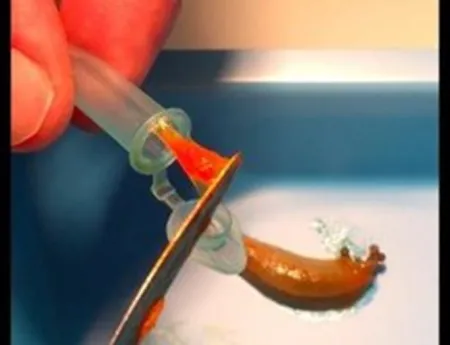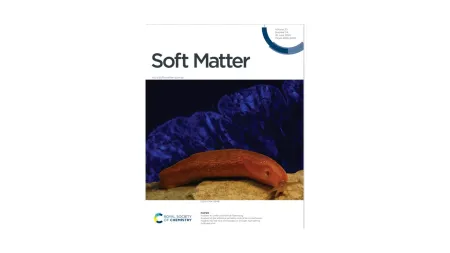- Monday: 4:00
- Wednesday: noon
Note that I am often available for help outside of office hours

Note that I am often available for help outside of office hours

Credit: Rebecca Falconer, Ithaca College
We investigate the adhesive secretions produced by snails and slugs. We are currently focused on the sticky adhesive gels used as a defensive secretion by a few species of slugs. When threatened, these slugs secrete huge amounts of this adhesive from their back; it will spread rapidly over any surface it contacts and adhere strongly. This would provide a serious deterrent to any animal that tried to bite them!
One thing that makes these glues particularly exciting is that they are dilute gels, yet remarkably tough. Most gels are outstanding lubricants and you wouldn’t expect them to be useful adhesives, but these adhesive gels have many properties that make them well-suited for sticking to tissues; they adhere to wet, irregular surfaces, they set quickly, they can be remarkably tough, and they can bend and flex with the tissues rather than peeling or cracking. Thus, our goal is to determine how this glue gains these particular properties, so that we can guide the development of novel biomedical adhesives.

Andy Smith and Patrick Flammang. "Analysis of the adhesive secreting cells of Arion subfuscus: insights into the role of microgels in a tough, fast-setting hydrogel glue." Soft Matter 40(24): 4655-4830. June 28, 2024. This interdisciplinary journal focuses on the interface between chemistry, physics, materials science, biology and chemical engineering. (Featured Cover Article)
Recent Published Chapter:
Andy Smith. "Sticky, tough, fast-setting glue: How metal ions make Arion subfuscus mucus into a potent defensive secretion." Chapter in Metals and their Functional Role in the Structures of Invertebrates. 2024. View the chapter here.